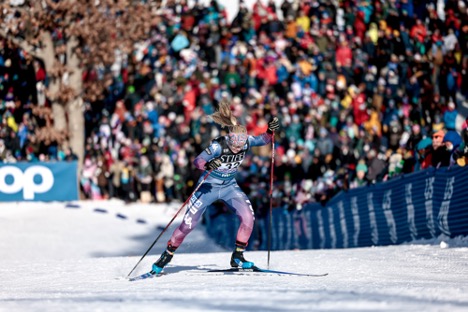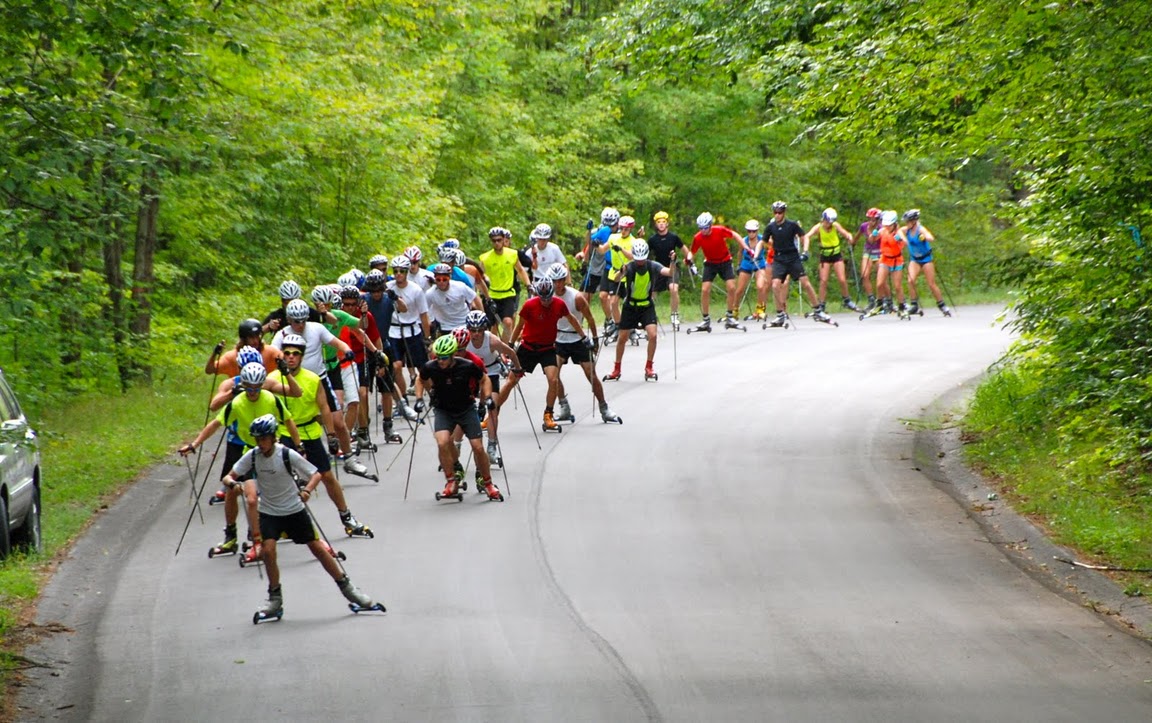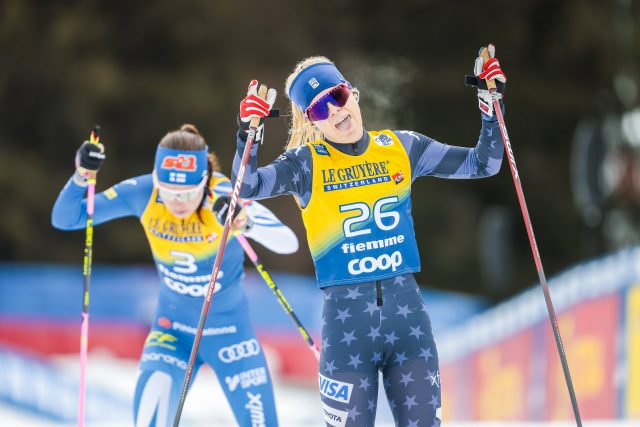
Competing at a professional level in any sport requires great skill, talent, and focus. Thinking of going pro? Unless you’re in the top 1%, don’t bother trying out. Then, once you reach the professional level of competition, the athletic quality is so high that there is simply no margin allowing time to participate in more than your primary sport. Despite all those seeming truisms, occasionally an athlete emerges with the talent and determination to be able to compete in multiple sports. Incredible athletes such as Connie Carpenter-Phinney and Eric Heiden did so with speed skating and cycling, but they went from a career in one sport to a career in the other. It’s far more rare for an athlete to be a professional in two sports simultaneously. The list of such two sport pro athletes is very short: Bo Jackson and Deion Sanders come to mind (football and baseball simultaneously). After that, the list is extremely short.
You can now add to the list of professional multi-sport athletes Sophia Laukli of the Stifel U.S. Cross-Country Ski Team. The 23 year old Laukli has been on the U.S. team since 2021 and represented the U.S. in the 2022 Olympics. Among her professional skiing highlights, Laukli podiumed in the Tour de Ski on the giant hill climb at Alpe Cermis.
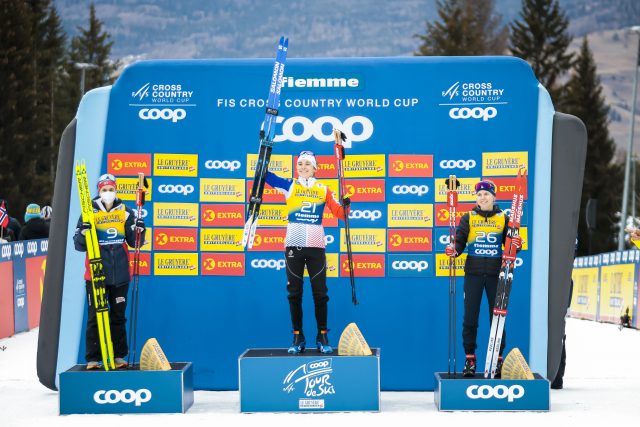
Not one to pass up an opportunity, last year Laukli began professional trail running while maintaining her status as a professional cross-country skier. On June 25th, Laukli won the prestigious Marathon du Mont-Blanc—a marathon-distance trail race—in a time of 4:12. Laukli not only won, but she crushed the existing record by almost 12 minutes even though this year’s race was longer and had more elevation gain than in previous years. The marathon’s distance changes a little each year, and this year’s version was 27.7 miles (44.6 kilometers) with 8,333 feet (2.5 kilometers) of elevation gain. The race is based in the picturesque town of Chamonix, France and consists of several grueling uphill and downhill sections.
Perhaps the most amazing thing about Laukli’s story is that she didn’t begin seriously running until a couple of years ago.
Laukli was gracious enough to take time out from her hectic schedule and speak with FasterSkier about her two-sport career. She very candidly shared her thoughts about her future as a professional multi-sport athlete, and a host of other topics.

This interview has been edited for clarity and brevity.
FasterSkier: You’re now in Oslo, Norway. Do you consider that home?
Laukli: Very recently. When I finished University of Utah this spring, I thought I would give Norway a full time try. I just moved here four weeks ago.
FasterSkier: You’re fluent in Norwegian and also French?
Laukli: Yes, but I’ve lost my French quite a bit from not speaking it for a while.
FasterSkier: You’ve been a professional trail runner for two years. When did you begin to think about competing professionally, and what attracted you to trail running?
Laukli: In high school, I hated running. I got into trail running when I started training out west. When I was going to school in Utah, I started to run the mountains and thought it was pretty cool. At that point, I knew I could run based off our skiing workouts, and now that I enjoyed running, I hopped into some local races. I didn’t set out to become a professional trail runner. There’s actually a Salomon employee who looks over super niche race results in the U.S. who reached out to me. That was two years ago that he kind of found me. It kind of just fell into my lap.

FasterSkier: So you were just running as training and as a hobby and were discovered? You never had a long simmering ability as a runner?
Laukli: No, not at all.
FasterSkier: That’s really unusual!
Laukli: Yes. It’s so shocking to me. Like I said, in high school I didn’t like running at all. I thought it was miserable. So, seeing what I’m doing now—is a little bit of a surprise. I ran a season of track in high school and that was enough. I played soccer most of the time in high school. I competed in cross-country [running] my senior year just because our team was in the running for state champs. I raced, but I wasn’t really part of the team.
FasterSkier: So you’ve completely serendipitously discovered this new love?
Laukli: Exactly.
FasterSkier: During the coverage of the Mont-Blanc race the commentators said that this was the furthest you have ever run. Is that accurate?
Laukli: It’s technically accurate. I’ve run 42k once in training a few years ago. With this race, the altitude, elevation gain, and everything about it was way more daunting than anything I had ever attempted before.
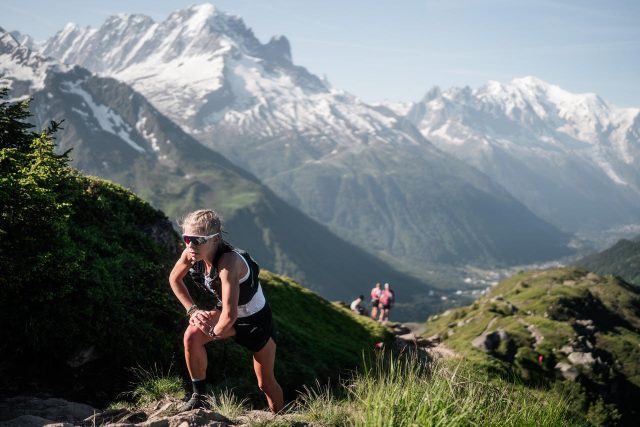
FasterSkier: Given your lack of experience at this distance, were you apprehensive going into the race?
Laukli: I was very very nervous! All of the running races I’ve done before I didn’t need specific training for them. They were about three hours long, but that’s kind of the limit you can get away with if you know how to run. 30k is the turning point for when things can go from zero to 100, so that’s why I was quite nervous. Last year the longest I had raced was about three hours and I ended that so exhausted.
FasterSkier: At some point in the race did the nerves subside?
Laukli: Yes. Just like in skiing, right off the start line you know how you are going to feel, and I shocked myself with how good I felt in the first 10k and I knew there was a lot of potential if I raced smart.

FasterSkier: Were you concerned you went out too fast? You reeled in the lead woman at the start very quickly?
Laukli: No. I watched the race replay, and they were commenting on that a lot.
FasterSkier: That seemed like all they could talk about for a while.
Laukli: Yes, I was pretty shocked when I heard that because it’s true: I’m a novice, but I was so cautious and nervous— I was very confident in the pace I was going. It didn’t really stress me out. I’ve always been a body listener in all of my training and didn’t start wearing a heart monitor until my new coaches told me to. So that’s helped me to know how to pace.
FasterSkier: The race coverage was pretty incredible.
Laukli: Yes. I was so impressed!
FasterSkier: You were regularly mentioned as a pre-race favorite. Given this is only your second season, did this surprise you and put pressure on you?
Laukli: In the running world, they do not hesitate to say, “You’re expected to win this.” No one wants that pressure or expectation. But I didn’t let it get to me too much. Also, these first couple of races, there are a lot of racers absent, so there wasn’t as much depth.
FasterSkier: Well, maybe some of the top racers weren’t there but you still broke the course record by almost 12 minutes on a course that was longer and had more elevation gain than before. So no matter who wasn’t there, that performance catapults you to the elite level right away, doesn’t it?
Laukli: That was my best running performance ever. I was curious to see if the results would have changed if some of the other top runners had been there. But I felt that I won because it was a really good performance.
FasterSkier: What motivated you to run this distance?
Laukli: It was self-motivated. It’s such an iconic race and that motivates me on which races to run. Some people were second guessing my choice. I watched the race last year and decided I really wanted to do this cool race.
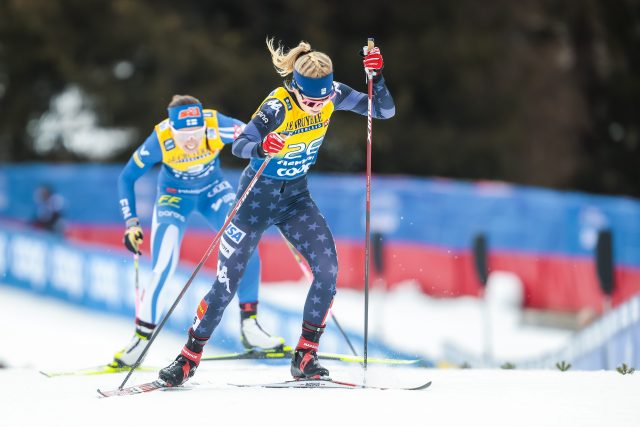
FasterSkier: The course profile is a roller coaster. How does it feel running it?
Laukli: You’re told the race doesn’t start until the second climb which is at about 30k. I really “sensed it” on the first climb and people were telling me to chill, that this isn’t where you go, and I did fade toward the end. The race has two very significant climbs, and I haven’t fully learned how to approach that. I was really struggling on the second hill. I’m still navigating how to drink enough, and I bonked quite a bit. I would like to do it again and see if that’s inevitable or if I can approach it better.
FasterSkier: Regarding fueling. There are only three aid stations. What was your strategy?
Laukli: Coming from skiing, I didn’t realize how strict of a plan you need. If I drink too much I cramp, so I try to compensate by having a ton of gels, but I realize the liquid piece is really important. I had an hourly amount of liquid and carb intake, but with the conditions I needed to drink more. Everyone carries about 500ml, and I wasn’t filling up as much as others at the aid stations. Stomach issues are such a thing in running, and if you haven’t trained for drinking a lot it’s not going to go well. A lot of people stop to drink at the aid stations, but I have a hard time doing that, which is pretty dumb in a race that long. Gels really work for me, but when it’s so hot you need liquid.
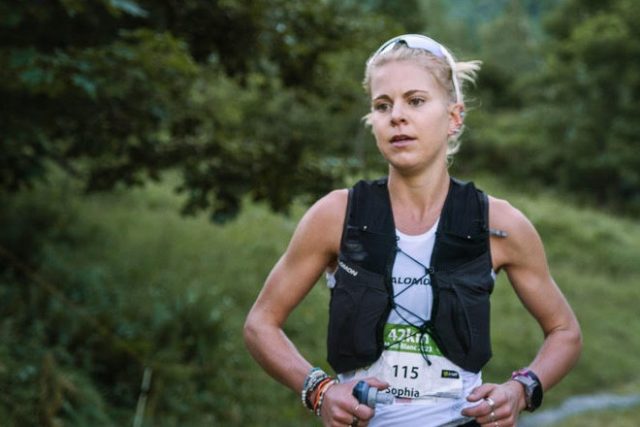
FasterSkier: You looked really fluid and relaxed almost the entire race. Did you feel that way?
Laukli: Not really. At the last aid station, with about 8k left, I was so nervous to hear the split. A couple of Salomon people told me I had a 12 minute lead, and I was so relieved. I was thinking, “Right now I can maybe get to the finish line.” I was in a state where if I needed to go fast, I was probably going to face plant, because the body was really really down. I don’t think I executed perfectly.
FasterSkier: The downhills are technical and there are pictures from previous races of very bloodied runners from falls on the downhills. What was your strategy?
Laukli: Going in, the race was a full mystery. I had no idea what was coming. The downhills are actually less technical than in a lot of the other races, but because it’s 40k in, it doesn’t take a lot to make you trip. If I didn’t have such a huge lead, I probably would have fallen, because all I was thinking was to not go fast down the hills.
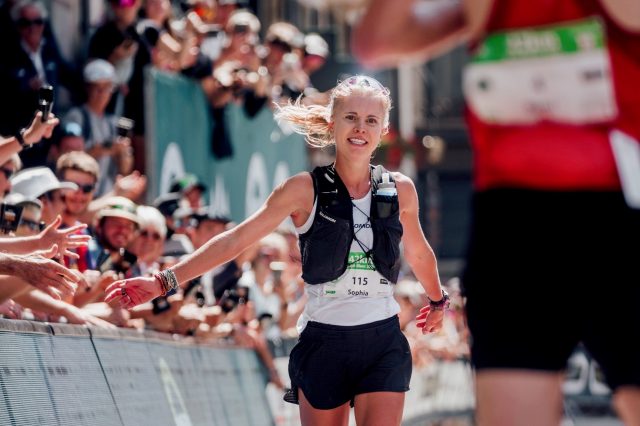
FasterSkier: The city center finish is a lot like the Birkie, but with even more people. You looked totally pumped up high-fiving everyone as you ran in?
Laukli: That was the coolest race finish I’ve ever had. During those last five minutes I forgot about how bad I felt. This is an unusual finish. I did not account for how much this race meant to people.
FasterSkier: They offer a 90k version of the race. Any thoughts on doing that?
Laukli: NO! When I finished, I thought I don’t know if I ever need to run a marathon again. It’s a one-time event a year for me.
FasterSkier: Your top 10 finish means you get an all expense paid trip to the next race (Dolomyth’s Run, Italy, July 15th). The race moniker is “The Couloir of Hell.” You going?
Laukli: I hadn’t planned on it, but I think I’ll end up doing it. It’s just a two hour race, so it’s a lot easier on the body.
FasterSkier: How did you feel after the race? The downhills have to take a big toll?
Laukli: I felt very bad. My downhill technique made things worse. Even now, (nine days later) my legs don’t feel fully normal. Most of my training is a lot of roller skiing, so these long running races take a lot more out of the body. I’m really not used to it.
FasterSkier: Any other races?
Laukli: Yes, I’ll do Sierre-Zinal (31 K in the Swiss Valais Alps). Then I’ll go back to the U.S and do Pike’s Peak. But I might skip one now that I’m doing the Dolomites.
FasterSkier: How does the climbing in this race compare to Alpe Cermis in the Tour de Ski?
Laukli: I go way deeper in the pain cave in running. Skiing is a little nicer to the body, and it’s way shorter. I have the ability to push a little more in running. In skiing the technique still holds me back a little and in running your not held back by anything.
FasterSkier: Do you consider yourself a skier who runs, or a runner who skis?
Laukli: Definitely a skier who runs. I train completely normally for skiing and haven’t changed my training at all to cater to running. If I would start running more specifically, I think my skiing would take a toll and I really don’t think I’m losing anything in running by doing so much ski training.
FasterSkier: Right now your focus is on ski training, and you don’t have a specific running program?
Laukli: No.
FasterSkier: Wow! So, all of the running ability is just a byproduct of ski training?
Laukli: Yeah. It is a bit unique, and I try to explain that to the other runners and it’s very confusing to them. I don’t totally get it either. I truly don’t run that much during the week. I just seem to have this natural endurance where if I’m in good shape I can run.
FasterSkier: What you’re doing is so unusual for professional ski racers. Have you run into resistance with people telling you that you shouldn’t be doing this?
Laukli: Yeah, but it’s not necessarily people saying you shouldn’t run, it’s more like people suggesting caution. Don’t do too much, or you’re going to start sacrificing skiing ability. It comes from both sides. The running people say you should only run because you’re way more successful running than skiing. The skiing side is saying don’t get injured, don’t overdo it. It’s a bit of a battle from both sides, but I think that’s inevitable. I still feel enough [support] from both sides that it’s not a huge issue, but there’s definitely pushback on both sides.
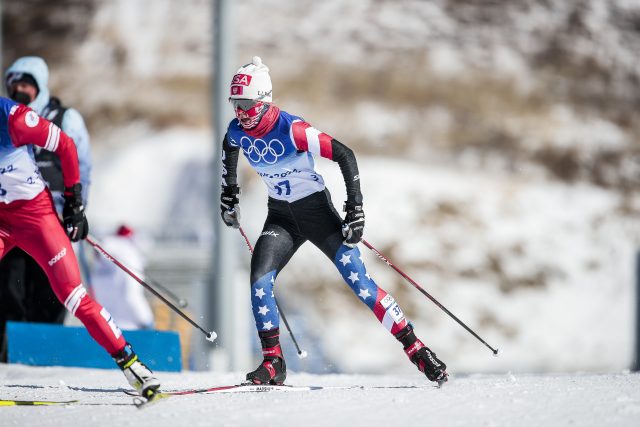
FasterSkier: Do you foresee continuing this way for several years, where you’re a professional two sport athlete?
Laukli: I really hope so, but I don’t know. This past ski season I ended the season and was way more motivated to keep skiing and improve results than I have been before. I want to get a lot better at skiing, and in order to do that I don’t know if the running piece is that beneficial, but at the same time I know that I won’t really want to keep skiing if I don’t have running. I get way more excited about skiing if I also have running. I want to definitely ski through the next Olympics, and until then skiing will definitely take priority. I’ll probably continue running after skiing. I think you can run a lot longer than skiing, but it’s a balance I haven’t quite figured out yet.
FasterSkier: But the pressure isn’t so great to pick one or the other that you still feel comfortable going forward doing both?
Laukli: Now; I don’t feel the pushback is getting in the way, but that could change in the coming years. Running is more financially sustainable than skiing.
FasterSkier: Given your running success and the financial rewards that go with it, is it tempting to say that maybe this is where my better use of time is?
Laukli: I totally have those thoughts. Whichever season I’m in I kind of want to just stay there. I went into the ski season last year thinking running was way more fun, but then I had the ski season, and was thinking ok, skiing is what I want to do.
FasterSkier: Compare a really hard 50 k ski race to a trail running race of equivalent time. Is the running always a little deeper into the pain cave?
Laukli: Yeah. I think so. Skiing is unique because there’s so much tactics. In running, there are tactics, but it’s very different. In skiing there’s more room to conserve energy.
FasterSkier: In the Tour de Ski on the Alpe Cermis climb, did your running really help you out?
Laukli: Yes. That’s the most equivalent ski race to a running race. For me it’s [Alpe Cermis] way less painful than a normal ski race because I just find a pace and keep it, I do it for 30 minutes and get to the top. It’s way more simple than other races.
FasterSkier: Your forte is long distance. In skiing, how short does a race get for you before it’s too short?
Laukli: Probably 5k. It’s good that we’re doing 20ks and 50ks now.
FasterSkier: With the World Cup in Minneapolis, any possibility of you hanging around and doing the Birkie the following week?
Laukli: Yes. That is my plan as of now. I’ve never done it, and there are a handful of us who are considering doing it.
FasterSkier: You’re now sponsored by Salomon for winter and summer. Are you the only one with that arrangement?
Laukli: Jessie [Diggins] is technically Salomon running as well. But as far as someone competing in both, I am.
FasterSkier: Was that a reason for choosing Salomon as your sponsor, so you could have a year ’round relationship?
Laukli: For sure. I signed with Salomon two years ago for running. This last year it came up as a possibility to sign with them for both and it made a lot of sense to me.
FasterSkier: Do you work with the same team at Salomon for summer and winter?
Laukli: It’s a lot of collaboration between both sides. Being a 360 athlete is a unique presence, so that provides a benefit also. Also, earlier, when we were talking about pushback to choose one or the other, with Salomon it’s the opposite because it’s an environment where they’re very much supporting the other sport.
FasterSkier: You also decided recently to move to Norway to join team Aker Daehlie, what was your thinking behind that?
Laukli: There were a lot of different reasons. World Cup is in Europe. Most of the running I do is in Europe. It’s really tempting to have a European base. The running is very good in Norway, and obviously the skiing is too. There were skiing reasons and running reasons.
FasterSkier: Does it cause any conflicts with the U.S. team as far as attending camps?
Laukli: No. Essentially, it’s just like being on Stratton or APU, it’s just that I’m based out of Norway.
FasterSkier: Your father’s Norwegian, was he a big influence on you taking up skiing?
Laukli: Yes, but both my parents ski. I definitely started to ski because both my parents skied.
FasterSkier: If you had to choose between going for a really nice three hour ski or a really nice three hour run, which would you do?
Laukli: This is going to scare ski people, but I would definitely go for a run.
FasterSkier: Have you ever considered doing a road marathon?
Laukli: Yeah, it would be really cool, especially one of the big races. It’s not on the agenda currently. It’s worth looking into. But the timing [calendar] of the marathons is poor. Watching Boston this year, I thought it would be really fun to do.
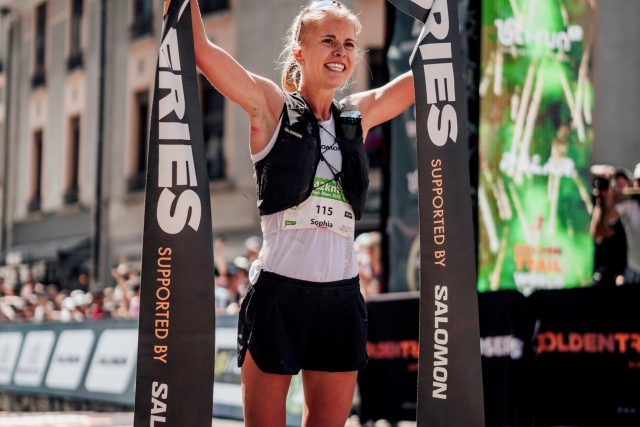
FasterSkier: Even though you’d rather go for a run than a ski, what is your favorite place to go for a recreational ski anywhere in the world?
Laukli: I would ski in Sjusjoen, right by Lillehammer. If I’m going on a long ski, I want it to be endless trails and that’s the place for that. (Sjusjoen has over 2,500 km of trails.)
FasterSkier: Classic or skate?
Laukli: That would be a skate ski.
FasterSkier: I would think the running would transition nicely to classic?
Laukli: I would think so too, but that’s currently not the reality.
FasterSkier: You travel a lot. What’s one thing you can never be without on the road?
Laukli: A good jar of peanut butter.
FasterSkier: Is good peanut butter hard to come by in Europe?
Laukli: They do make it in Europe, but I’ve always traveled with my own jars because you never know if this niche little place is going to have it and I just really want to have it, so now I just always bring it and it makes my bags really heavy!

FasterSkier: When you do a long training session do you listen to music?
Laukli: I’m actually an audio book person. I only do audio books. I don’t do music.
FasterSkier: Really? So, you go for a hard run and you’re listening to a book?
Laukli: If I’m doing intervals, I probably won’t listen to anything. But if I’m just training easy then yeah, I listen to books. I used to listen to music, but I’d get bored, and books were more interesting.
FasterSkier: So, what are your favorite audio books?
Laukli: The reason I started was because I’d never read Harry Potter, so I did the entire series. I also listen to Steven King. I don’t have one genre.
FasterSkier: That’s really interesting. I think you’re the only person I’ve ever spoken to who listens to books while training.
Laukli: I’m very aware of that. I’ve tried podcasts, but I enjoy books the most.
FasterSkier: Do teammates tease you about that?
Laukli: Honestly, I don’t know if many of them know.
FasterSkier: Well they’re going to know now!
Laukli: That’s ok. I pride myself on it.
FasterSkier: Favorite thing to eat after a really long training day if you can eat anything?
Laukli: I think any sort of pastry, but I really like donuts.
FasterSkier: Are donuts a thing in Norway?
Laukli: I’ve discovered that they’re really bad, so I‘d have to find something new.
FasterSkier: Minneapolis has a couple of great donut places so maybe you can stock up for road food while you’re driving to the Birkie?
Laukli: That would be perfect . . .
FasterSkier would like to thank Sophia Laukli for spending time speaking to our reporter Ken Roth, and thanks also to the GoldenTrailSeries for the use of photographs.

